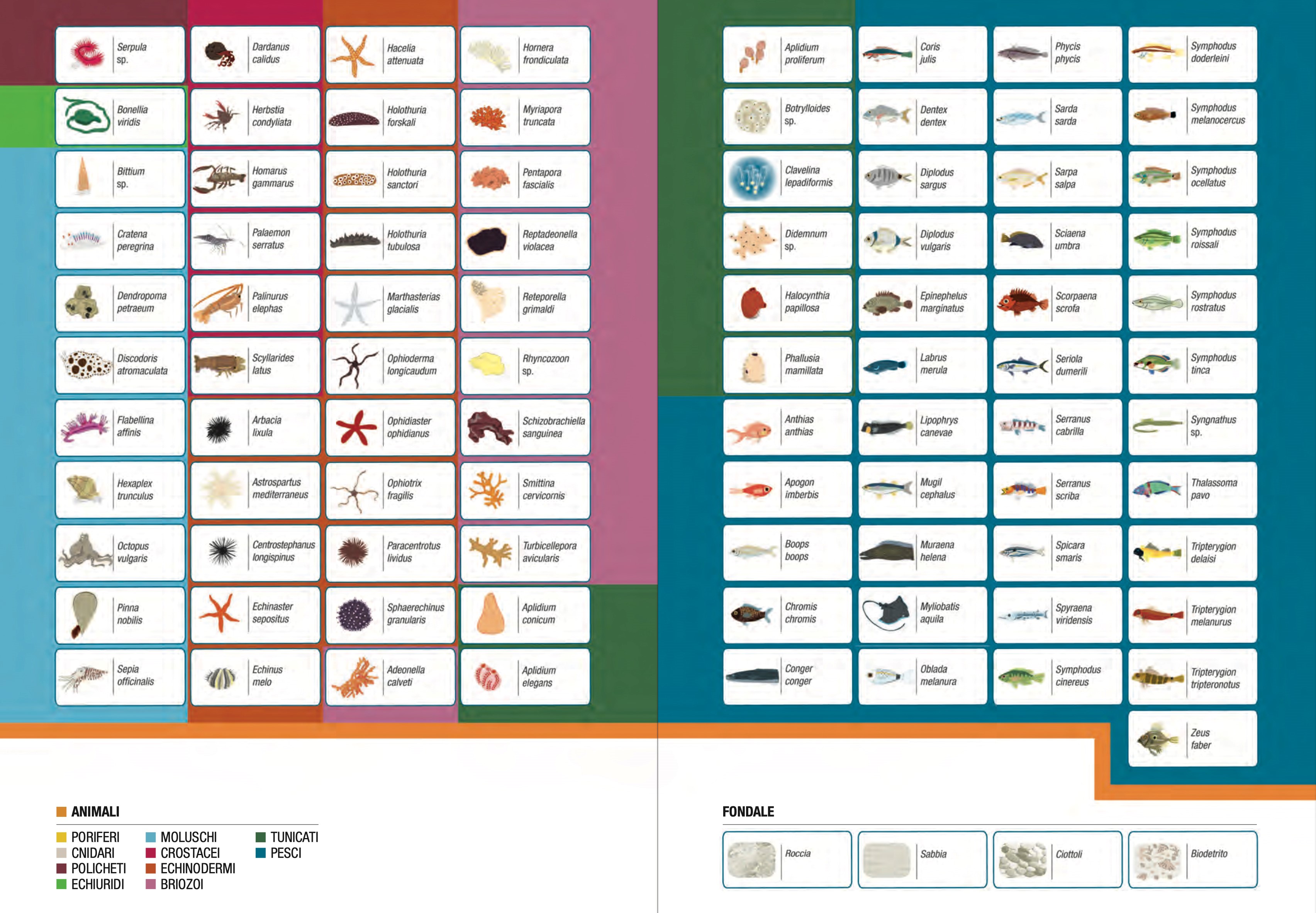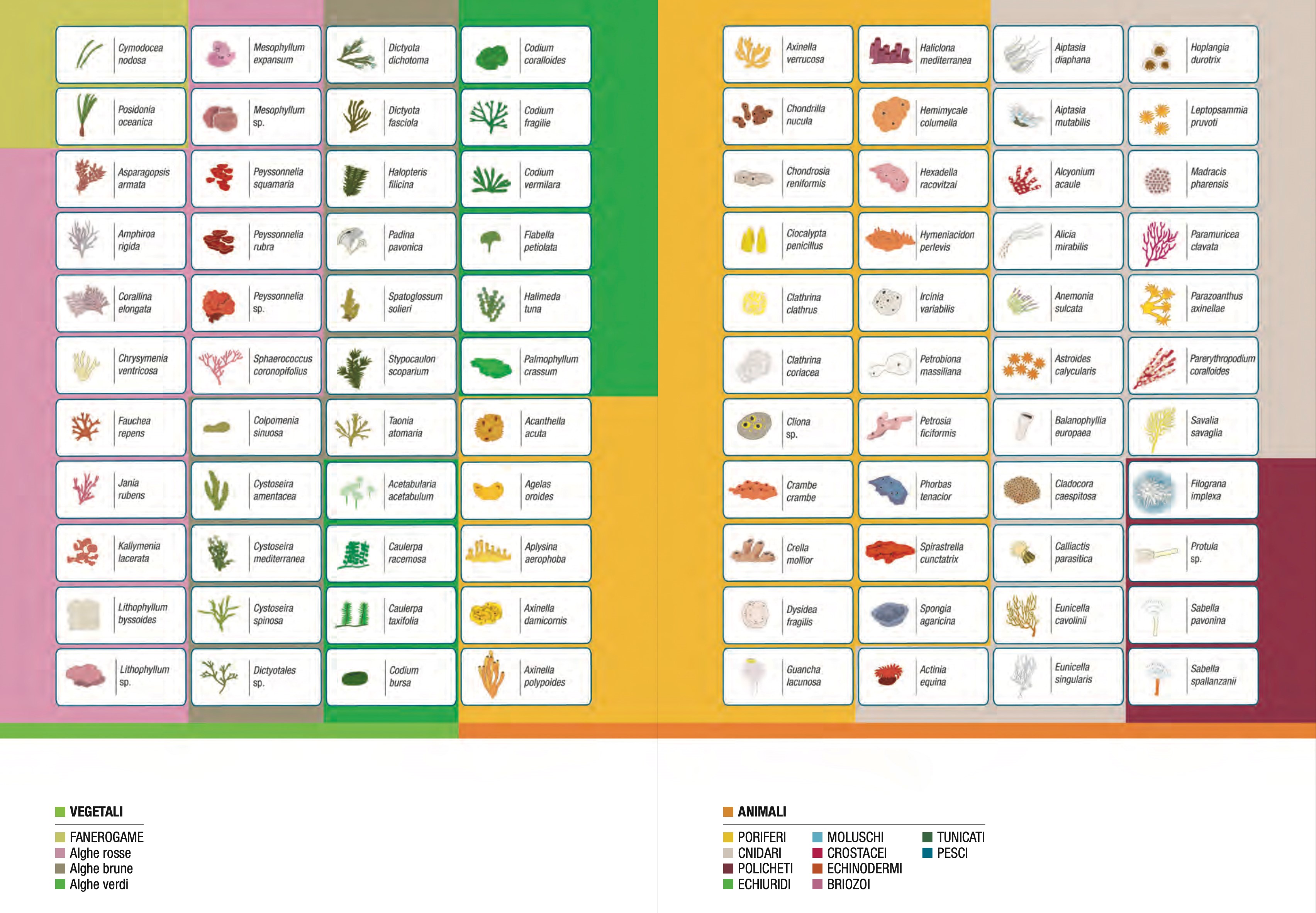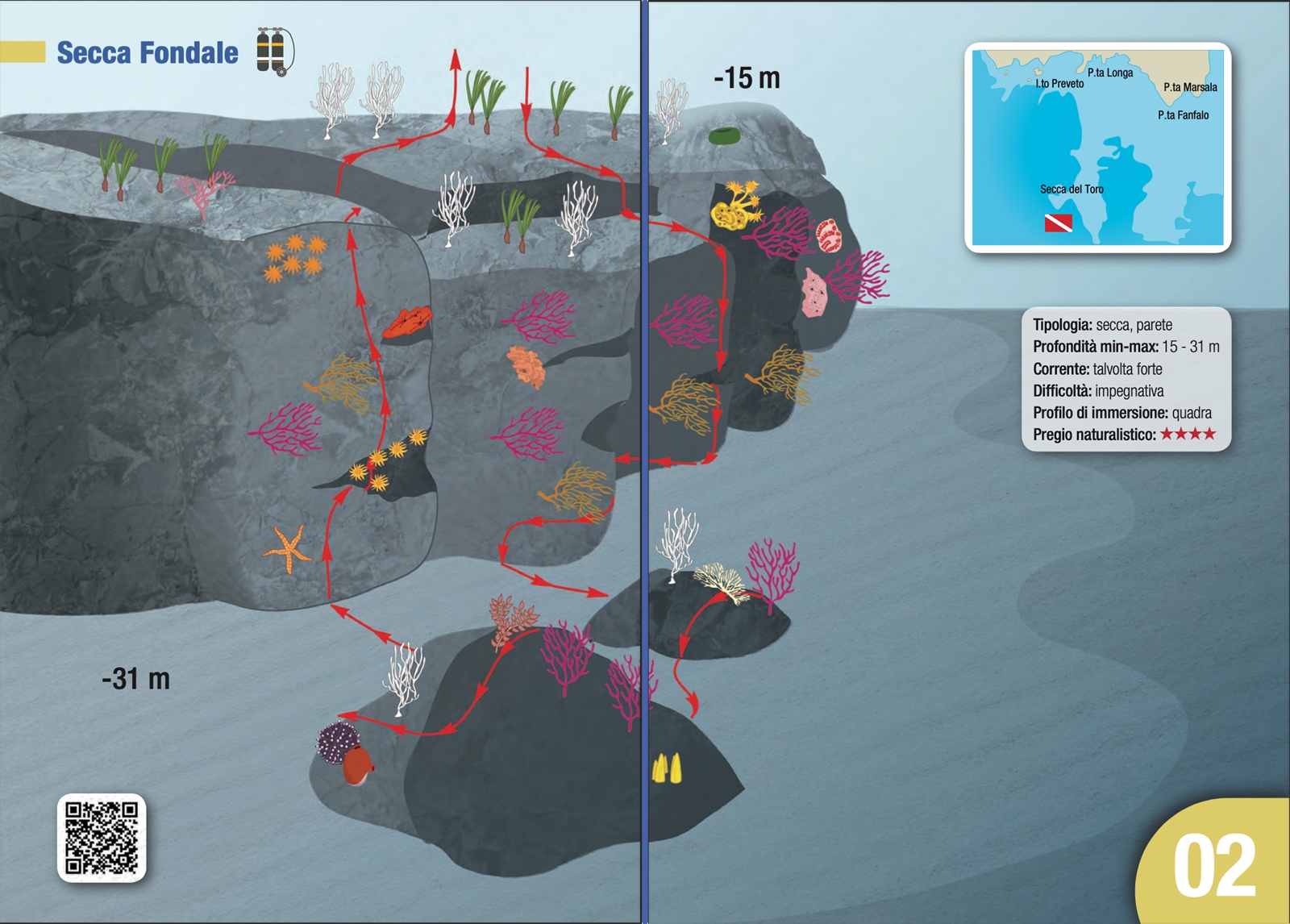Site 2 - Secca Fondale
The variety of benthic species and the alternating underwater landscapes make this shoal particularly interesting and appreciable. The summit is located at 15 m where, among the rich algal stands mixed with Posidonia oceanica, it is possible to encounter actinias of the species Alicia mirabilis and Anemonia sulcata. Along the slope one can recognise the white gorgonian (Eunicella singularis), the star Hacelia attenuata and boulders on the sloping side of which the bright orange of the madreporaria Astroides calycularis stands out, framed by green algae (Flabellia petiolata, Halimeda tuna) and red sponges (Spirastrella cunctatrix). Spiny starfish (Marthasteria glacialis) and the long-spined black sea urchin Centrostephanus longispinus are frequent. Fish include the menola (Spicara smaris), the grey wrasse (Sympodus cinereus), the peacock wrasse (S. tinca ), and the peacock damsel (Thalassoma pavo ). At a depth of about 23 m, the wall becomes vertical and features interesting and colourful crevices and crevices. The uppermost layer is formed by the fans of yellow (Eunicella cavolinii ) and red (Paramuricea clavata) gorgonians, but it is above all the benthic layer below that lends colour and variety to the habitat thanks to the presence of areas covered with sea daisies (Parazoanthus axinellae), the madrepores Leptopsammia pruvoti and Madracis pharensis, sponges (Hexadella racovitzai, Agelas oroides, Axinella verrucosa), tunicates (Aplidium proliferum, A. conicum, A. elegans), and bryozoans (Pentapora fascialis, Smittina cervicornis, Myriapora truncata). Lobsters (Palinurus elephas) are often found within the rocky clefts. On the boulders at the foot of the wall, at a depth of about 31 m, red and white gorgonia can be found, as well as a dense algal cover (Codium bursa, Chrysymenia ventricosa, Sphaerococcus coronopifolius) and sponges (Ciocalypta penicillus).
Legenda:


-
Information
-
Contacts
